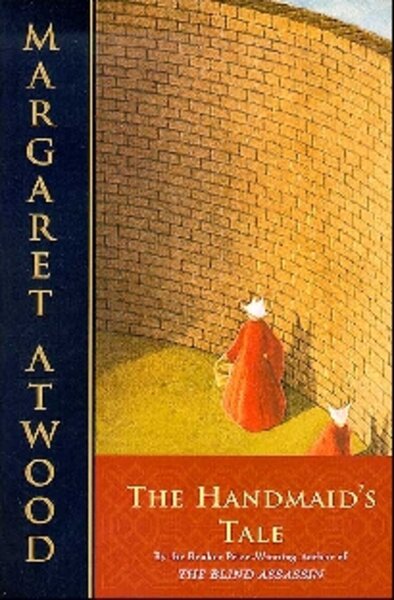The Handmaid's Tale
Loading...
[This review from the Monitor's archives originally ran on Feb. 24, 1986.] In the introduction to a 1982 collection of her essays, Canadian novelist Margaret Atwood admits, “I began as a profoundly apolitical writer, but then I began to do what all novelists and some poets do: I began to describe the world around me.''
In The Handmaid's Tale, her sixth and most controversial novel, Miss Atwood goes a step further. She describes the world that she imagines our present world could lead to. Out of the threads of current headlines she has woven a garment that is part political tract, part suspense thriller, part cautionary tale. Call it future shock, feminist-style. “The Handmaid's Tale'' chillingly projects a repressive new social order where women are stripped of all identity and exist “for breeding purposes'' only.Some details of Atwood's bizarre anti-Utopia are at least as repellent as those in such forerunners as Aldous Huxley's “Brave New World'' in 1932 and George Orwell's “1984'' 16 years later. Those two novels have come to be seen as fiercely moral tracts that jarred their readers to awaken them. Will Atwood, as different from Huxley and Orwell as they were from each other, join them in the accepted ranks of those disguised idealists who image the future as a nightmare in order that it may remain just that – a fantasy? Certainly the early reviews of her book have been mainly positive.
What Atwood offers most persuasively is the provocative idea that women's subjugation is symptomatic of an inverted world in which everything is poisoned, from the laws of the police state to the polluted environment.
The time is the near future, the place is the Republic of Gilead – formerly known as the United States. A coup d’etat by religious fundamentalists has left the President and Congress dead, the Constitution suspended, and borders sealed. Rulers of the new theocracy, seeking to repair the damages wrought by a society “dying of too much choice,'' now specialize in public executions and private humiliations.
Atwood's storyteller, a 33-year-old woman known only as Offred, serves as a handmaid to one of the ruling Commanders of the Faithful, Fred, from whom she takes her name. As a fertile woman, Offred has become ``a national resource,'' part of the new regime's desperate attempt to reverse an alarming drop in Caucasian birthrates. Her sole function – indeed, her only hope for survival – is to carry out a perverse, graphically depicted version of Old Testament lore and bear a child for the aging Commander, with the collusion of his barren wife. In this least feeling of worlds, ``Love is not the point,'' one of the more privileged women notes sternly.
With unsparing explicitness, Atwood records the daily lives of the women of Gilead – as barren as their wombs. She blends pain and irony as Offred spends idle hours recalling the freedom of the past, when women could own property, use credit cards, hold jobs. A bygone humanity enters in as Offred thinks longingly of her missing husband, daughter, and mother. She amuses herself by playing with words and noticing every detail of her surroundings – a Victorian house in what was once Cambridge, Mass. – and derives “intense pleasure'' from the pebbly shell of a breakfast egg and the heady scent of night-blooming flowers in the garden below her room.
Atwood suggests that only Offred's restless imagination helps to preserve her sanity – and her determination to survive. æI intend to get out of here,'' she insists to herself. “It can't last forever.''
“The Handmaid's Tale'' has dominated literary news since its publication. With an indignation that sometimes suggests a cautious reformer, sometimes a resigned pessimist, Atwood is showing her readers her Brave New World – and challenging them to reject it.
Marilyn Gardner is a former Monitor staff writer.






